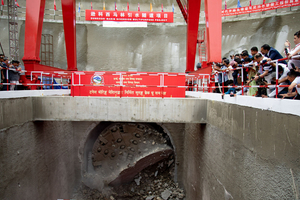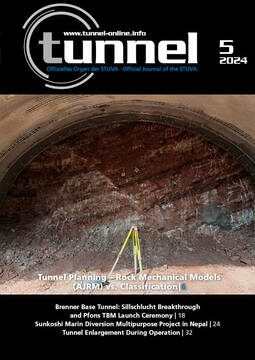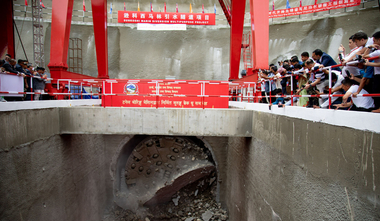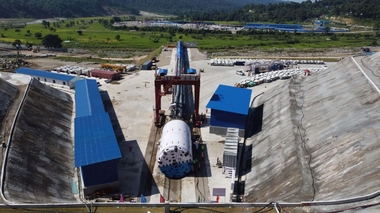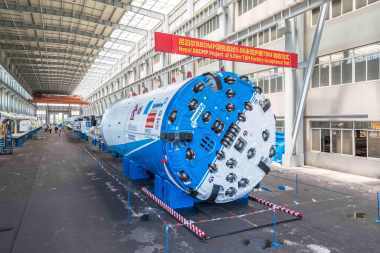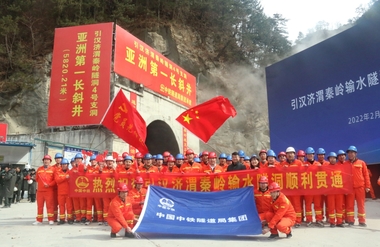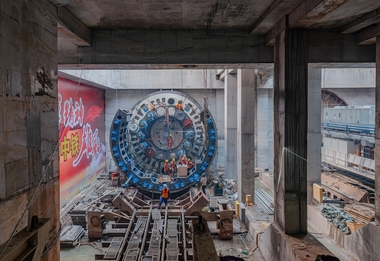Sunkoshi Marin Diversion Multipurpose Project:
TBM Breaks Through 11 Months Early in Nepal
Nepal’s Sunkoshi Marin Diversion Multipurpose Project (SMDMP), at 13.3 km in length, is one of the longest TBM-driven tunnels through the Himalayan mountain range and is only the second such tunnel to be completed in the country. A Robbins double shield machine with a diameter of 6.4 m overcame exceptionally difficult geological conditions and finished tunnelling at the beginning of May 2024, 11 months ahead of schedule.
The SMDMP is one of Nepal’s “National Pride Projects” – a series of government infrastructure projects that are of particular importance for the country‘s development. The project is an inter-basin water transfer project aimed to transfer water from the Sunkoshi River to the Marin River, a tributary of the Bagmati River. The flow will be augmented to the Bagmati Irrigation System to irrigate an additional 122 000 ha of land in Rautahat, Dhanusha, Mahottari, Sarlahi, and Bara. The design flow of the project is 67 m3/s. The intake has a 12 m high diversion dam in the Sunkoshi River. The flow is transferred via the 13.3 km long tunnel. The project also has a power station to generate 31.07 MW of electricity. The powerhouse is located in Kamalamai municipality.
Challenging and Varied Geology
Ground conditions included two major fault zones with challenging and varied geology ranging from highly jointed mudstone, sandstone and conglomerate to quartzite, granite, and more. The tunnel was bored through mostly igneous rock with maximum overburden of 1320 m.
The TBM and its experienced crew were able to persevere through multiple instances of the shield becoming trapped with bypass tunnels required to free it, including one instance 4 km into tunneling that required
27 days’ worth of work to free the machine from collapsing and squeezing ground. Despite the challenges, the crew were able to more than make up the time with swift advance rates including an impressive 1503.3 m in one month and 72.6 m in one day, both project records set in March 2024.
The success of the machine, despite adversity, is in part due to its proven design. The refurbished TBM was originally used at a smaller diameter on Nepal’s first TBM-driven tunnel, the Bheri Babai Diversion Multipurpose Project (BBDMP). The design incorporates many of the same components of that original machine, and the process involved final assembly on location at the jobsite. It’s something the contractor sees as a positive: “One of the highlights is that this machine integrates the overall structure of the 5.06 m diameter TBM from the Bheri Babai project. After upgrading to 6.4 m diameter, all new front shield components were not assembled in the factory. Instead, we adopted Onsite First Time Assembly (OFTA). This was very effective, and I find it particularly noteworthy,” said Mr. Jin Haikuan, Deputy Project Manager & TBM Production Manager for B-2/COVEC.
Tunnel for Irrigation and Power Generation
With tunnelling complete, the work of providing both power and water can begin. The tunnel is connected to a new 28.6 MW surface powerhouse on the Marin River to alleviate the shortage of power supply in the area. It will also be used for farmland irrigation in the districts of Dhanusha, Mahottari, Sarlahi, Rauthat and Bara in the Terai Plain.
The project’s successful completion is a triumph not only for the communities benefiting, but also for the future of tunneling in Nepal. “B-2/COVEC and Robbins have successfully introduced and spread TBM technology in Nepal and shown the advantages of it. This country needs more tunnels,” said Robbins President Lok Home at the breakthrough ceremony.

